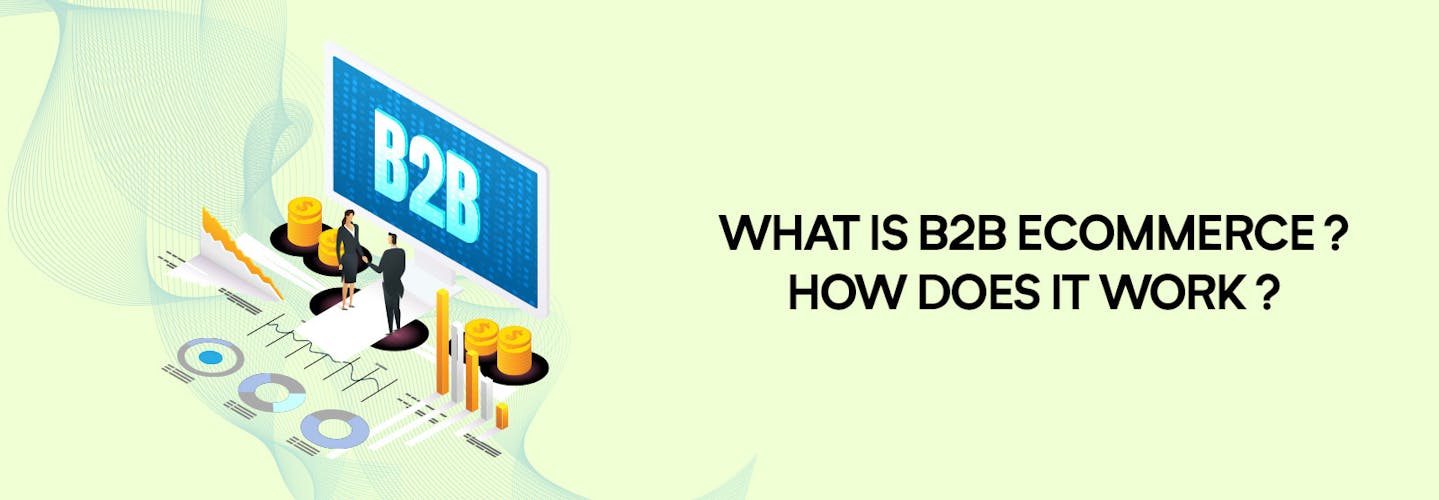
B2B Ecommerce Explained: How It Works and Why It Matters
Wondering what B2B ecommerce is?
In very simple terms, B2B is an ecommerce model that is about selling and marketing goods online between two businesses. The objective of B2B ecommerce is simple: enhance business revenue, expand reach, reduce costs, increase sales volume, and form new networks and business relationships.
Before we understand what business-to-business ecommerce is and how it works in detail, let’s understand the relevance and scope of the model through some facts and stats:
- The business-to-business ecommerce market across the globe touched $14.9 trillion in 2020, which was more than five times the B2C ecommerce structure back then.
- Online sales on B2B ecommerce sites increased 17.8% to $1.63 trillion.
- It has been anticipated that the B2B ecommerce market will reach more than $18,771 billion across the globe by 2027.
The most critical fact to consider is:
- 52% of B2B consumers have reported that the online experience has not been up to the mark, and 90% of B2B buyers will instantly switch to a competitor if the digital experience isn’t as per their expectations.
So, quality of service and ease of online experience is key.
This is why we have brought you the aasaan app to make B2B ecommerce simple, user-friendly, advantageous, and profitable, whether you are an online seller, business owner, home business, MSME, or even a service-based entity.
Let’s dig in more and learn what B2B ecommerce platforms are all about.
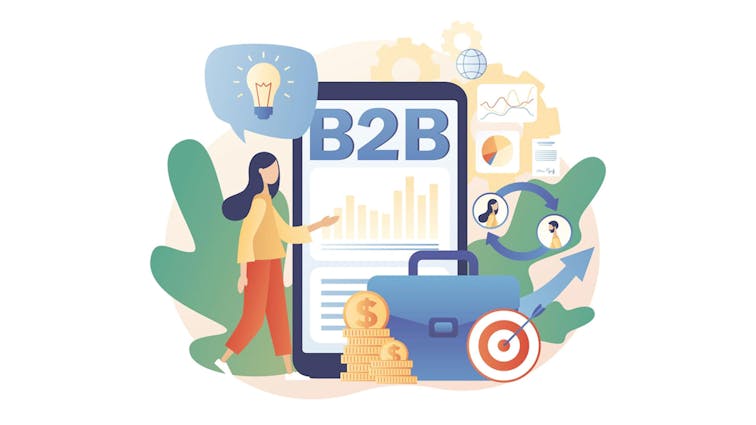
Understanding B2B Ecommerce
B2B eCommerce, or Business-to-Business eCommerce, refers to online transactions between businesses.
It typically involves sales between a manufacturer and a wholesaler, or a wholesaler and a retailer.
This differs from B2C (Business-to-Consumer) eCommerce, which involves transactions between businesses and individual consumers.
The evolution of B2B eCommerce has been significant.
With the advent of the internet and digital technologies, businesses have been able to streamline their operations, reach a global audience, and operate 24/7, transforming the traditional business model.
How Does B2B Ecommerce Work?
The B2B eCommerce process involves several steps, from initial contact and negotiation to the final transaction and after-sales service.
It often involves larger order quantities, longer sales cycles, and more complex pricing structures compared to B2C eCommerce.
Key players in B2B eCommerce include manufacturers, wholesalers, and retailers. Each plays a unique role in the supply chain, contributing to the efficient movement of goods from production to the end consumer.
Technology plays a crucial role in B2B eCommerce.
It facilitates online transactions, automates processes, provides real-time data and analytics, and enhances communication and collaboration among businesses.
From cloud-based platforms to AI and machine learning, technology continues to drive the evolution of B2B eCommerce.
Types of B2B ecommerce:
B2B eCommerce can be categorized into several types based on the nature of transactions and the parties involved:
- Manufacturer/Producer to Distributor: This is a common type of B2B eCommerce where manufacturers or producers sell their products in bulk to distributors. The distributors then sell these products to retailers or directly to end consumers.
- Distributor to Retailer: In this type, distributors sell products to retailers who then sell to end consumers. This is a common model in industries like consumer goods, where products often pass through multiple hands before reaching the consumer.
- Wholesaler to Retailer: Wholesalers, like distributors, sell products in bulk to retailers. The difference is that wholesalers typically deal with a narrower range of products.
- Business Services: This type of B2B eCommerce involves businesses that provide services to other businesses. This can include software companies, marketing agencies, logistics providers, and more.
- Direct to Business (D2B): Some manufacturers or service providers skip the middlemen and sell directly to other businesses. This model is becoming more popular with the rise of digital platforms that connect businesses directly.
- Online Marketplaces: These are platforms where multiple sellers can list and sell their products. Examples include Alibaba and Amazon Business. These marketplaces can involve multiple types of B2B transactions.
Each type of B2B eCommerce has its unique characteristics and challenges, and businesses need to choose the model that best fits their products, industry, and overall business strategy.
Different Stages of a B2B ecommerce Setup:
Whether you’re a newly established B2B company or a well-established one, you need an ecommerce platform at every point. Here are the four main stages of the B2B business model:
1. New or Startup B2B ecommerce
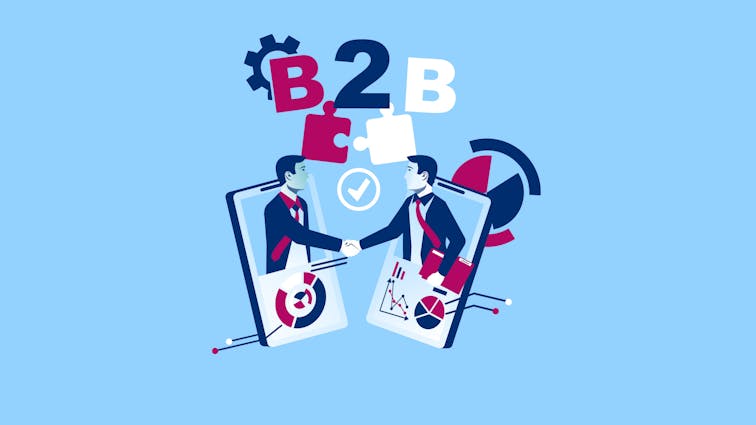
After you have completed the development of your product, you need to start marketing and selling it to your customers and grow progressively.
Your focus should be on researching target markets and identifying consumer segments. aasaan helps you adapt your products and advertising based on customer feedback and demand and take your marketing strategy to the next development phase.
Further:
- We help you build your market presence and define your target audience
- You can stand up against larger competitors
- You can manage cash reserves and enter the growth phase, also called the survival phase.
2. Growth Stage
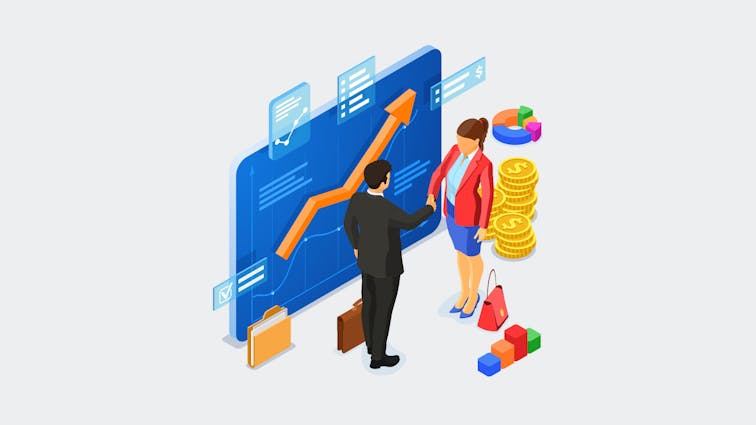
This is when your business is at break-even; even if it’s profitable, it’s not as high as your sales level. We help you cover operational costs and explore new business opportunities.
You can:
- Deal with more customers and manage higher returns
- Face increased competition
3. Expansion Stage
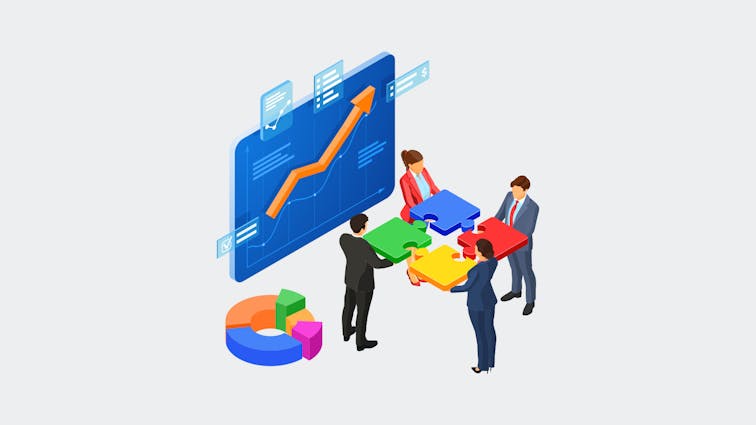
This stage is all about establishing a presence in the B2B market, entering new niches, and gaining new revenue streams. At this stage, you can use our app services to:
- Create new products and services and venture into new markets
Maintain and grow your existing business
4. Maturity Stage
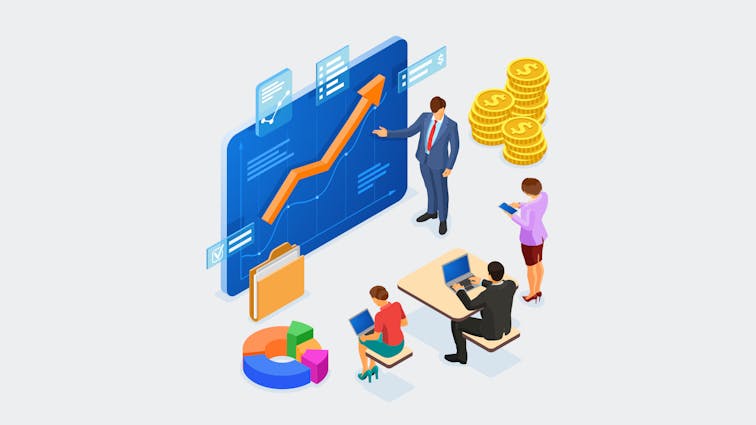
This stage is accompanied by a slow cash flow and shrunk margins. Even if your business is dominant and still growing, it probably won’t grow as fast as the expansion phase.
At this point, you need to restructure as a B2B commerce company by exploring new ecommerce technologies and entering new markets.
Benefits of B2B ecommerce Platforms
B2B ecommerce companies are often trapped with outdated platforms.
Depending on innovative apps can help B2B ecommerce businesses meet the needs of their online customers and create outstanding experiences that drive sales and fulfill orders wherever shoppers are.
Many people take B2B ecommerce platforms for granted, considering them mere tools for listing products and accepting payments.
Ecommerce platforms must be able to control everything from sales to trading operations, customers, or digital marketing.
To this end, aasaan offers various services and day-to-day B2B functionalities that include:
- Growth of B2B business across multiple channels, platforms, and devices
- Conversion optimization with powerful checkout actions
- Personalized and customized sales and marketing experiences
- Use of trusted APIs to consolidate consumer data from your ERP or CRM
- Enhance your local reach, so customers can easily navigate to find your brand and your products
- Offer competitive and highly affordable payment options with multiple payment providers and manual billing
We help you increase your sales by:
- Segregating the consumer base and customizing prices and discounts according to each category
- Making it easy for your consumer base to purchase, monitor, and reorder products from you
- Automating and validating new buyer registrations
- Synchronizing your inventory and orders
- Linking customers with your existing ecommerce store or third-party software
Challenges in B2B Ecommerce
Despite the benefits, B2B eCommerce also presents challenges:
- Complex Sales Processes: B2B transactions often involve larger order quantities, longer sales cycles, and more complex pricing structures.
- High Customer Expectations: B2B customers expect a seamless, personalized shopping experience, similar to B2C eCommerce.
- Need for Personalized Experiences: Businesses need to offer personalized experiences to stand out in the competitive B2B market.
Key Features of B2B Ecommerce Platforms
B2B eCommerce platforms offer several key features:
- Customer-Specific Pricing: Businesses can offer personalized pricing based on the customer’s purchase history, volume, and loyalty.
- Bulk Ordering Capabilities: B2B transactions often involve large quantities, and eCommerce platforms can facilitate this process.
- Advanced Payment Options: B2B eCommerce platforms offer a variety of payment options, including credit terms, wire transfers, and purchase orders.
Case Study: Successful B2B Ecommerce Businesses
Several businesses have found success in B2B eCommerce.
For instance, Alibaba, a global trading platform, connects manufacturers and wholesalers worldwide.
They’ve achieved success through a user-friendly platform, a wide range of products, and secure payment options.
Another example is Grainger, a leading B2B retailer of maintenance, repair, and operating supplies.
They’ve leveraged technology to provide a seamless, personalized shopping experience, leading to increased customer loyalty and sales.
These businesses highlight the potential of B2B eCommerce and offer valuable lessons in leveraging technology, understanding customer needs, and providing a seamless shopping experience.
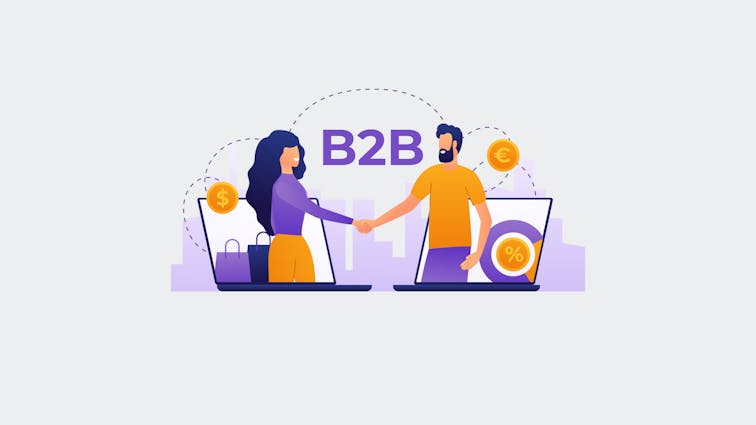
Construct Lasting Business Networks and Build a Thriving B2B ecommerce Model
Here are some reasons why you need our app to grow and expand your B2B business model:
1. Understand How B2B Models Succeed
The upward thrust of ecommerce has caused large shifts within the typical B2B marketplace. We help you thrive in the ever-competitive B2B arena by:
- Redefining your visible merchandising
- Creating social evidence using fine product photos and videos and sharing opinions and ratings
- Offering flexible delivery alternatives and order updates
- Enhancing personalization beyond purchases with online catalogs for smooth browsing
- Availing real-time inventory accessibility and customer interaction using chat and call assistance
- Providing access to statistics online
2. Enhance Your Search Capabilities
Help clients discover and purchase your products. Improving onsite search can help you streamline the sales process and adopt a more consultative role rather than just focusing on sales.
3. Facilitate Wholesaling
We provide digital versions of the manual business functions that traditional businesses have been accustomed to. We offer a content-based strategy to guide customers through various content funnels and help them delve deeper into the wholesaling process by:
- Educating buyers
- Giving them choices to assist in purchasing decisions
- Implementing post-sales support
- Helping shoppers solve their problems rather than promoting your product
The goal is to create the necessary brand awareness and be more customer-centric.
4. Enhance Social Media Presence
According to Gartner, 46% of B2B buyers learn about available solutions, 40% compare solutions, and 35% look for relevant information before they complete a purchase.
We help you get on social media networks like Facebook, Instagram, and LinkedIn through personalization and create listings depending on your business needs.
Why Should You Choose a B2B ecommerce Model to Thrive?
As many as 81% of online buyers research a product or service before they invest in it. It has also been observed that if a business offers a supreme and valuable mobile experience, 9 out of 10 business users will return for a repeat purchase.
Thus, the need of the hour is to revamp your business structure and transition from the traditional mode to the digital way of transacting. Moving on to newer versions of digital apps will enhance your business model with new features and modern trends.
There are several benefits you can gain by putting your B2B commerce on the aasaan app:
1. Effectively Manage Your Suppliers and Customers
We are a modern ecommerce platform that helps you manage customer details, inventory management, order fulfillment, statistic-tracking, etc., in one place. We help you streamline B2B operations and enhance customer experience.
2. Sell More to Existing Customers
Providing an opportunity to cross-sell and up-sell existing buyers using our platform is one of the best strategies. The aim is to attract customers and offer a personalized experience.
3. Engage and Interact with Buyers
We help you explore newer opportunities and expand your reach to acquire new customers.
With so many ecommerce platforms and marketplaces, there is virtually no limit to merchants who want to go digital, making it easier for B2B companies to globalize and enter new product markets like never before. We make this as easy as possible.
4. Better Data Analysis
One of the main benefits of our app is being able to use it frequently to track customer behavior while shopping. The data analytics reports can be used to determine what areas of your business are working and how you can optimize the customer experience.
5. Exceeding B2B Buyer Expectations
We help businesses automate sales processes with reduced overhead costs. This empowers our B2B merchants to enter the mass market with a 24/7 omnichannel brand presence, forming better partnerships and maximizing customer satisfaction.
We Follow B2B Commerce Trends
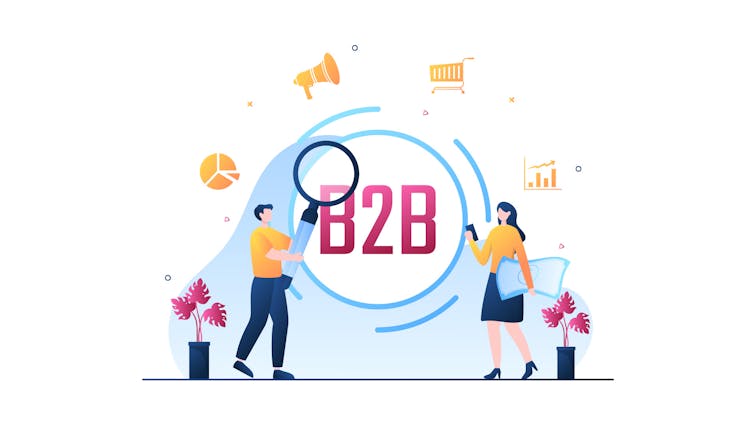
We offer you more sophisticated B2B ecommerce solutions following transformational trends like:
- Personalization using omnichannel selling strategies
- Being a progressive web app developed for Android and iOS, operating directly out of the web browser, making it more convenient for you to drive sales.
- Offering conversational strategies like voice search, purchasing, and improving customer experience with repetitive ordering.
- Incorporating enhanced VR and AR to allow buyers to virtually learn everything about complex products and designs.
- Application of AI and IoT that can help you predict the desired outcomes and receive relevant recommendations.
- Mobile apps account for approximately 4-5 hours of a person’s average daily use. Further, the number of smartphone users is forecasted to reach 18.22 billion by 2025. Optimizing mobile growth helps you gather high-value leads and delve into bigger and newer opportunities.
The aasaan app advantage:
According to McKinsey, nearly 65% of B2B companies across industries are fully transacting online in 2022, and about 18% of B2B revenue is coming directly from ecommerce.
At the same time, 42% of distributors consider constructing a website the most challenging job in the coming year.
aasaan is a leading SaaS ecommerce platform that provides B2B companies ease of use, high functionality, and continuous updates with an open API. We help you integrate your website and other social media accounts into our systems.
Out of all the other marketplaces, aasaan is one of the newest, most trending, and customer-oriented business-to-business ecommerce examples.
We believe in providing the utmost functionality with a configurable architecture that helps B2B commerce ventures create their own user-driven experience and adopt a simpler and faster alternative.
The Future of B2B ecommerce: Conclusion
B2B commerce is evolving and reaching newer heights by optimizing the online experience to meet ever-changing shopper expectations.
Business-to-business ecommerce apps help you focus on emerging trends and abandon outdated and traditional systems. It is time for modern B2B businesses to build a digital transformation strategy and use B2B ecommerce solutions as their roadmap to success.
Frequently Asked Questions:
1. How to start a B2B ecommerce business?
To start a B2B e-commerce business, you simply need to set up your products and services on our ecommerce site to list the products you sell. The process takes just a few minutes and will eventually help you explore newer markets and take your business to the pinnacle of growth and success.
2. Which is more profitable, B2B or B2C?
B2C sales are only about one-third of B2B sales. Business-to-business ecommerce is more profitable in terms of the total global merchandise volume.
3. Should B2B businesses use digital marketing?
B2B businesses must follow a digital marketing strategy to enhance their reach through social media, advertising, and SEO. It is imperative to use content marketing to educate customers about products, create videos showing how to use your product, write case studies explaining how your product helped other customers solve specific problems, and blog about industry trends that form a relevant part of enhancing your overall SEO strategy.








